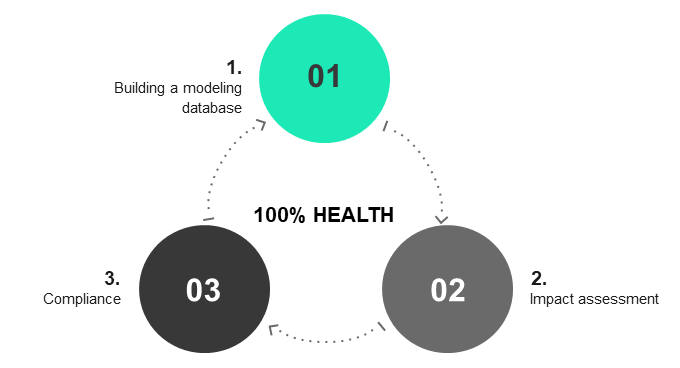Research and Report
Analyse comportementale
1 minute read
Sia Partners supports clients in the valuation of impacts that the French health reform (100% Santé) can have. This is achieved using existing models, and by exploiting more complex models with the use of machine learning, notably to enhance predictive accuracy.

The Health sector is subject to ongoing regulatory changes. Insurers must assess the impacts they can generate from their portfolio, make the best use of the available data, adapt their prices and their product range accordingly, and then finally make sure their contracts are compliant. Sia Partners supports clients during these three fundamental stages, in all regulatory developments (responsible contracts, ANI, intra-annual cancellations, etc.):

Reading and exploiting data from data centers is an extremely important step in modeling risk and predicting its evolution. This phase is divided into four parts:
Reconciliation of exposure and claims files, database formatting, and data quality control.
Improvement of risk knowledge, and identification of specific features in the available portfolio (overall analysis of the portfolio, analysis of data and its influence on the model, etc.).
Selection and development of models according to business constraints.
Delivery of a product that is perfectly integrated into business processes (assistance with the implementation of the solution, writing technical specifications, and implementing data visualization tools to communicate the results).
The "100% Santé" reform aims to regulate Health product features, causing an increasing number of people to cancel or delay healthcare for financial reasons. Three product lines were thus created, the lowest cover includes a commitment to access care and receive a full reimbursement. In this regard, how can stakeholders anticipate costs generated by behavioral changes of the insured in the portfolio?
We can clarify these impacts for our clients, as well as using machine learning tools that refine the prospective vision. Traditional pricing techniques have certain limitations because they are based on linear links between variables, while certain behavioral effects can be more complex. This approach can be broken down into six stages:
Ensure overall consistency, change logic, whilst respecting strategic, financial, and commercial decisions.
The objective is to find a technical balance while facing challenges and considering new regulatory frameworks.
To this end, additional studies can be done, for example, to measure the changes in underwriting behavior caused by the implementation of the reform (for example, to adapt the commercial strategy and optimize acquisition costs).